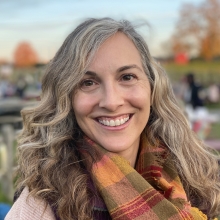From K-12 to Higher Ed, the resources below examine careers in the broader Education field.
A career in international affairs can be fueled by a passion to travel and a desire to learn about our global environment, effectuate change, and make a difference in the world. Learn more about this field and applications through the resources below.
The below resource can help you begin exploring career paths in Public Health.
Green Hall 448B
106 Central Street
Wellesley, MA 02481

Career paths in curriculum design are wide-ranging, beginning with the variety of terms and job titles you will hear and levels of preparation required (a Bachelor’s degree is required, often a master’s is preferred--or depth of knowledge in the subject). There is often confusion within the occupation surrounding titles. Typically, the role involves development and evaluation of curricular and training materials.

Wherever there’s a need for information, there’s a need for a librarian. Libraries have been empowering people by offering resources, services and training to expand their knowledge for thousands of years. According to the American Library Association career resource page there are approximately 400,000 librarians and library workers who bring opportunity every day to the communities they serve.

This resource covers:
Masters Degrees
Joint Degrees
PhD in Political Science/Government/Politics or PhD in Public Policy

This resource will give you an overview of the career opportunities available if you want to pursue a job in a college or university setting. There are two basic career pathways in Higher Education — academic affairs and student affairs.
The term “human services” is a broad umbrella that captures a range of career pathways. In this resource, we will outline those pathways that are focused on mental health and wellness. In addition, although we highlight here some career pathways that are common.
While all nonprofits share a commitment to bettering society in some capacity, they are incredibly diverse in terms of size, focus, and type. In the United States alone there are millions of nonprofits ranging from small, community-based organizations, to cultural and educational institutions such as museums, universities and colleges (like Wellesley!) to large foundations supporting causes around the globe.